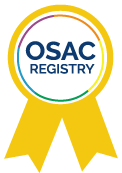May 2021
This Standards Bulletin from the Organization of Scientific Area Committees (OSAC) for Forensic Science provides a monthly update on:
- Standards moving through the OSAC Registry approval processes for published and OSAC Proposed Standards.
- Standards moving through the development process at standards developing organizations (SDOs).
Bulletin Summary:
- New standards added to the OSAC Registry: 3
- Standards under consideration for the Registry and open for comment: 10
- SDO documents open for comment: 13
In this issue
OSAC Registry Updates

The OSAC Registry is a repository of high-quality, technically sound published and proposed standards for forensic science. These written documents define minimum requirements, best practices, standard protocols and other guidance to help ensure that the results of forensic analysis are reliable and reproducible.
Three New Standards Added to the OSAC Registry
SDO Published Standards
- ANSI/ASB Standard 018, Standard for Validation of Probabilistic Genotyping Systems, First Edition, 2020 (added May 4, 2021).
- ANSI/ASB Best Practice Recommendation 021, Best Practices for the Preparation of Test Impressions from Footwear and Tires, First Edition, 2019 (added May 4, 2021).
- ASTM E3245-20e1 Standard Guide for Systematic Approach to the Extraction, Analysis, and Classification of Ignitable Liquids and Ignitable Fire Debris Samples (added May 4, 2021).
Standards Open for Comment
The OSAC Registry approval process for published standards is used to review existing SDO published standards for technical quality and placement on the Registry. Please submit your comments by the deadline on whether the following SDO published standards should be included on the Registry.
Comment deadline May 6, 2021 by 11:59 p.m. ET:
- ASTM E3255-21 Standard Practice for Quality Assurance of Forensic Science Service Providers Performing Forensic Chemical Analysis. Submit your comments here.
Comment deadline June 4, 2021 by 11:59 p.m. ET:
- ANSI/ASB Technical Report 051, Scope of Work for a Footwear/Tire Examiner, First Edition, 2020. Submit your comments here.
- ASTM E3272-21 Standard Guide for the Collection of Soils and Other Geological Evidence for Criminal Forensic Applications. Submit your comments here.
- ADA Technical Report 1077-2020 Human Age Assessment by Dental Analysis. Submit your comments here.
The OSAC Registry approval process for OSAC Proposed Standards is used to review OSAC drafted standards for technical quality and placement on the Registry. The following OSAC draft proposed standards are being considered for submission to an SDO. The final draft provided to the SDO will be available on the OSAC Registry as an “OSAC Proposed Standard.” OSAC welcomes comments on whether the current draft is suitable for release to the SDO as well as suggestions for improvements in content and wording. To be considered, comments must be placed in the OSAC Comment Form and sent to comments [at] nist.gov (comments[at]nist[dot]gov) by the deadline.
Comment deadline May 6, 2021 by 11:59 p.m. ET:
- OSAC 2021-N-0015, Guiding Principles for Scene Investigation and Reconstruction.
- OSAC 2021-N-0016, Standard for Initial Responses at Scenes by Law Enforcement.
- OSAC 2021-N-0018, Standard for On-Scene Collection and Preservation of Physical Evidence.
- OSAC 2021-N-0019, Standard Practice for the Documentation and Processing of Shooting Scenes.
Comment deadline June 4, 2021 by 11:59 p.m. ET:
- OSAC 2021-N-0020, Best Practice Recommendations for Limited Examinations.
- OSAC 2021-N-0025, Standard Guide for Printing Method Effects on Facial Comparisons.
Standards at FSSB for Vote
- ASTM E2548-16 Standard Guide for Sampling Seized Drugs for Qualitative and Quantitative Analysis.
- ASTM E2882-19 Standard Guide for Analysis of Clandestine Drug Laboratory Evidence.
Is your organization implementing standards on the OSAC Registry? Complete OSAC’s Standards Implementation Declaration Form and send it to mark.stolorow [at] nist.gov (mark[dot]stolorow[at]nist[dot]gov) to let us know. Share your implementation experience and be featured in a future OSAC news post.
SDO Updates
New SDO Published Standards
The following standards have recently been published by ASTM:
- ASTM E2808-21 Standard Guide for Microspectrophotometry in Forensic Paint Analysis. This standard, initially drafted by OSAC’s Trace Materials Subcommittee and finalized by ASTM Subcommittee E30.01, is designed to assist an analyst in the selection of appropriate sample preparation methods and instrumental parameters for the analysis and comparison of paint pigments and colors. When used for comparison purposes, the goal is to determine whether any meaningful differences exist between the samples.
- ASTM E3272-21 Standard Guide for Collection of Soils and Other Geological Evidence for Criminal Forensic Applications. This standard, initially developed by OSAC’s former Geological Materials Subcommittee (now part of the Trace Evidence Subcommittee) and finalized by ASTM Subcommittee E30.11, provides guidance to instruct crime scene professionals in good practices for the documentation, collection, and preservation of soil and other geological evidence for use in criminal investigations. This standard is currently being considered for the OSAC Registry.
Criminal justice agencies can access the ASTM standards listed above by visiting OSAC’s Access to Standards webpage.
SDO Documents Open for Comment
Academy Standards Board (ASB):
- Recirculation* – ASB Standard 024, Standard for Training and Certification of Canine Detection of Humans: Location Check Using Pre-scented Canines, First Edition, 2021. This document provides the requirements for pre-scented canine-location check search using a canine team to search for and identify a specific person’s (target) scent at a given location. This standard promotes consistency across agencies, departments, and organizations utilizing pre-scented canines’ location check search and provide the judicial system optimized protocol. Comment deadline May 6, 2021.
- Recirculation* – ASB Standard 026, Standard for Training and Certification of Canine Detection of Humans: An Aged Trail Using Pre-scented Canines, First Edition, 2021. This document provides the requirements for training, certification, and documentation pertaining to pre-scented canine-aged track/trail search. Pre-scented canine aged trail searches use a canine team (canine and handler) to search for and follow aged trails of a specific person’s (target) scent over different surface types. An aged track/trail is a human-scent pathway that has been present for some period, typically expressed with a time frame associated with the track/trail (e.g., a 24-hour or older track/trail). Comment deadline May 6, 2021.
- Recirculation* – ASB Standard 027, Standard for Training and Certification of Canine Detection of Humans: Patrol Canine Team, First Edition, 2021. This document provides standards for the training, certification, and documentation pertaining to canine teams (canine and handler) trained to search for specific person(s), location(s), and/or article(s) by starting from the last known position. This pertains to trails less than 24 hours old. Comment deadline May 6, 2021.
- Recirculation* – ASB Standard 121, Standard for the Analytical Scope and Sensitivity of Forensic Toxicological Testing of Urine in Drug-Facilitated Crime Investigations, First Edition 2021. This document delineates the minimum requirements for target analytes and analytical sensitivity for the forensic toxicological testing of urine specimens collected from alleged victims of drug-facilitated crimes (DFC). This document does not cover the analysis of blood and other evidence that may be collected in DFC cases. Comment deadline May 6, 2021.
- Call for comment of ANS Limited Substantive Changes – ANSI/ASB Standard 036, Standard Practices for Method Validation in Forensic Toxicology, First Edition, 2019. This document delineates minimum standards of practice for validating analytical methods used in the field of forensic toxicology that target specific analytes or analyte classes. Specifically, it is intended for the subdisciplines of postmortem forensic toxicology, human performance toxicology (e.g., drug-facilitated crimes and driving-under-the-influence of alcohol or drugs), non-regulated employment drug testing, court-ordered toxicology (e.g., probation and parole, drug courts, child services), and general forensic toxicology (non-lethal poisonings or intoxications). This document is not intended to address method validation in the discipline of breath alcohol testing. The fundamental reason for performing method validation is to ensure confidence and reliability in forensic toxicological test results by demonstrating the method is fit for its intended use. Comment deadline May 10, 2021 – please note that comments will only be accepted on the revisions noted in the substantive changes document.
- Recirculation* – ASB Standard 135, Scene Detection and Processing in Forensic Anthropology, First Edition, 2021. This document provides requirements and best practices for forensic anthropology and forensic archaeology practitioners in proper scene detection, processing, handling of evidence, and maintenance of a chain of custody, commensurate with jurisdictional requirements. These requirements and best practices use archaeological techniques and principles as a foundation for scientifically appropriate detection, processing, documentation, and collection of human remains and associated evidence at a scene. Comment deadline May 17, 2021.
- ASB Standard 147, Standard for Analyzing Skeletal Trauma in Forensic Anthropology, First Edition, 2021. This standard provides requirements for documenting, describing, interpreting, and reporting skeletal trauma in forensic anthropology. It also provides requirements for the determination of trauma timing (i.e., antemortem, perimortem, or postmortem) and the identification of the mechanism that produced the trauma (i.e., projectile, sharp, blunt, or thermal trauma). This document does not address cause and manner of death. Comment deadline May 17, 2021.
- Recirculation* – ASB Standard 149, Standard for Taphonomic Observations in Support of the Postmortem Interval, First Edition, 2021. This standard provides requirements for describing and analyzing the taphonomic effects on human remains and associated evidence that can be observed in the laboratory as well as in the field. Also, it provides requirements for recording and reporting the taphonomic and contextual indicators that contribute to estimating the postmortem interval in sufficient detail to allow for independent interpretation, replication, and verification of conclusions drawn. Comment deadline May 17, 2021.
- ASB Standard 123, Standard for Routine Internal Evaluation of a Laboratory’s DNA Interpretation and Comparison Protocol, First Edition, 2021. This standard provides the requirements for the technical leader (or appropriate personnel) to: (1) routinely evaluate the consistent application of the developed, verified and implemented DNA interpretation and comparison protocol within a laboratory and laboratory system; and (2) assess whether the DNA interpretation and comparison protocol is appropriately and consistently used to produce reliable and reproducible interpretations and comparisons. This standard addresses the development of an internal evaluation system, including proper format of data, types of data to use, frequency of evaluation, and how to assess results. This standard applies directly to capillary electrophoresis-based STR DNA testing, but may also be applied as appropriate to laboratories using other test methods. This standard applies to manual/binary interpretation and comparison methods as well as methods using software as part of the analysis, interpretation, comparison, and/or for generation of statistical statements. Comment deadline May 24, 2021.
- Recirculation* – ASB Standard 140, Standard for Training in Forensic Human Mitochondrial DNA Analysis, Interpretation, Comparison, Statistical Evaluation, and Reporting, First Edition, 2021. This document provides the requirements for a forensic DNA laboratory’s training program in forensic human mitochondrial DNA (mtDNA) analysis, interpretation, comparison, statistical evaluation, and reporting. Comment deadline May 31, 2021.
- ASB Best Practice Recommendation 156, Guidelines for Specimen Collection and Preservation for Forensic Toxicology, First Edition, 2021. This document delineates guidelines for the collection of forensic toxicology specimens, their amounts, preservatives, and storage conditions. This guideline applies to specimens collected for laboratories performing forensic toxicological analysis in the following sub-disciplines: postmortem toxicology, human performance toxicology (e.g., drug-facilitated crimes and driving under-the-influence of alcohol or drugs) and other forensic testing (e.g., court-ordered toxicology, general forensic toxicology). It is not intended for the area of breath alcohol toxicology. Comment deadline May 31, 2021.
- Recirculation* – ASB Standard 054, Standard for a Quality Control Program in Forensic Toxicology Laboratories, First Edition, 2021. This document establishes minimum requirements for quality control practices in forensic toxicology laboratories. The document explains the importance of a quality control program, how to select and care for materials used to prepare quality control samples, proper preparation and use of calibrator and control samples, and requirements for their use in different types of assays. The document also provides direction for the review and monitoring of quality control data in forensic toxicology laboratories. This standard applies to laboratories performing forensic toxicological analysis in the following sub-disciplines: postmortem forensic toxicology, human performance toxicology (e.g., drug-facilitated crimes and driving-under-the-influence of alcohol or drugs), non-regulated employment drug testing, court-ordered toxicology (e.g., probation and parole, drug courts, child services), and general forensic toxicology (non-lethal poisonings or intoxications). It is not intended for the area of breath alcohol toxicology. Comment deadline June 14, 2021.
- Recirculation* – ASB Best Practice Recommendation 060, Guidelines for Barrel and Overall Length Measurements for Firearms, First Edition, 2021. This document provides guidelines for measuring and reporting barrel length and overall length (BL-OL) of firearms, including guidelines for measurement traceability and estimating uncertainty of BL-OL measurements. This document does not apply to descriptive measurements of firearms. Comment deadline June 14, 2021.
*Comments on a re-circulation will only be accepted on revised sections of a document, comments made to text not revised from the original comment period will not be accepted.
For the ASB documents listed above, download the comment template and return it to asb [at] aafs.org (asb[at]aafs[dot]org) by the comment deadline.
Other News
Professional Organization Support for OSAC Registry and Standards Implementation

The American Academy of Forensic Sciences (AAFS) and the International Association for Identification (IAI) are the latest professional forensic science organizations to publish formal statements supporting OSAC and standards implementation.
Read the policy and position statements from AAFS and IAI, along with the American Society of Crime Laboratory Directors (ASCLD), the Association of Firearm and Tool Mark Examiners (AFTE), the Association of Forensic Quality Assurance Managers (AFQAM), the Society of Forensic Toxicologists (SOFT), and National Association of Medical Examiners (NAME) on OSAC’s Registry Implementation webpage.
Other Forensic Science News, Events & Training

NIJ Solicitation for Research and Development in Forensic Science for Criminal Justice Purposes
The National Institute of Justice (NIJ) is seeking proposals for rigorous basic or applied research and development projects in forensic science. Need ideas for projects? Check out the research and development needs identified by OSAC’s subcommittees. Learn more and apply by June 3, 2021.
CSAFE Updates
Our colleagues at the Center for Statistics and Applications in Forensic Evidence (CSAFE) will be hosting the following upcoming webinars. To register, visit CSAFE’s Events webpage.
- Assessing Footwear Examiner Performance: Randomly Acquired Characteristics (RAC) Examinations, May 13, 11 a.m. – noon CDT.
- Algorithms in Forensic Science: Challenges, Considerations, and a Path Forward, May 25, 12:00 p.m. – 1:00 p.m. CDT.
FTCoE Updates
NIJ’s Forensic Technology Center of Excellence (FTCoE), in collaboration with several U.S. agencies, conducted a study to identify potential barriers related to the collection, tracking, and processing of arrestee and convicted offender DNA samples, as well as successful policies. Read more about the findings and recommendations from this study in the newly released report, Perspectives on Addressing the Collection, Tracking, and Processing of Lawfully Owed DNA Samples.
Visit the FTCoE website for other resources and forensic science events.
Get Involved with OSAC

OSAC offers a variety of ways for members, affiliates and other experts in the forensic science community to participate in the standards advancement process. Click here to learn how you can help make an impact on the forensic science community through standards.

